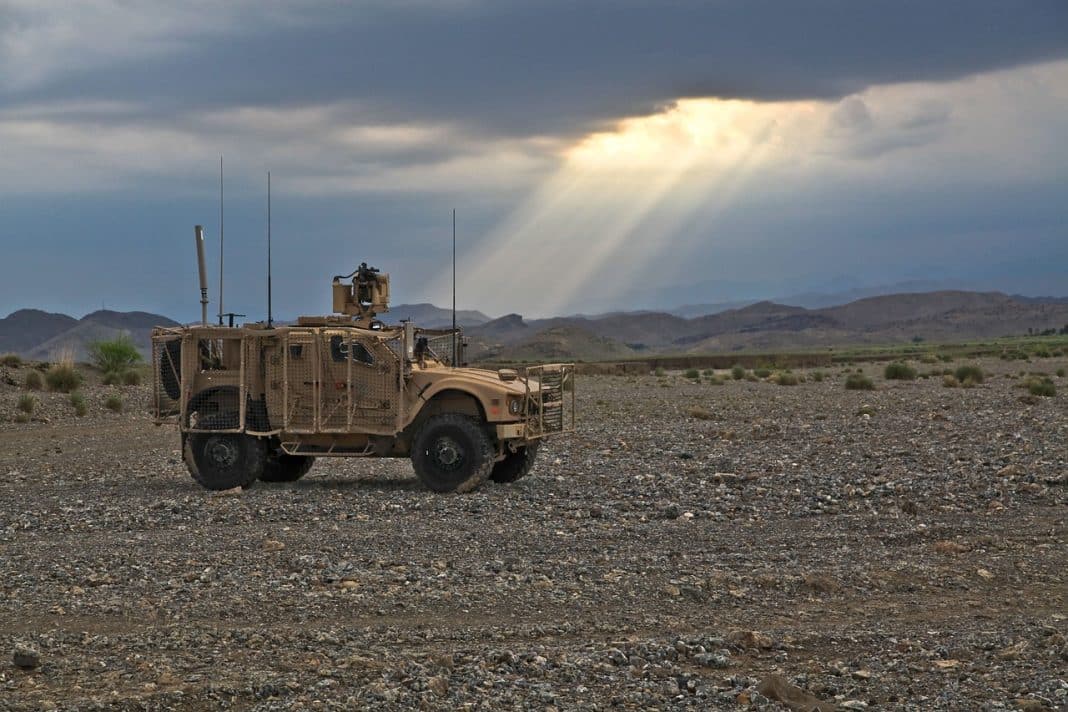U.S. Democratic senators introduced a new bill that will force the military to speed up its efforts to use electric non-tactical vehicles.
Sens. Elizabeth Warren and Mazie Hirono plan to introduce the Military Vehicle Fleet Electrification Act.
Their proposed legislation requires that 75% of the Pentagon’s non-tactical vehicle purchases in 2023 be electric or zero-emissions.
The Military’s GHG Emissions
According to research, the US military is a major polluter, and since 2001 has produced more than 1.2 billion metric tons of GHG.
That means the military emits more than what the entire countries like Denmark and Portugal do.
Also, the Pentagon accounts for 56% of the government’s GHG emissions, according to the White House.
The bulk of military emissions come from its operations – moving people and things around. Plus, it also owns a lot of property and has many buildings to heat and power.
The US Army’s climate plan, unveiled earlier this year, seeks to achieve a 50% reduction in Army net GHG emissions by 2030, compared to 2005 levels. And it aims to hit net zero GHG emissions by 2050.
In particular, it seeks a fully-electric non-tactical fleet by 2035. It’s also planning for an all-electric, light-duty, non-tactical vehicle fleet by 2027. While it aims to have fully-electric tactical vehicles by 2050.
The Department of Defense is exploring hybrid and fully-electric technology to be used on the battlefield.
Right now, the military is researching the potential of hybrid-electric drive for its tactical vehicles.
In fact, the DoD plans to test the performance of its first hybrid Bradley Fighting Vehicle in Arizona later this year.
It also has electrification works underway for Humvees and Joint Light Tactical Vehicles.
According to Sen. Warren:
“Transitioning the military’s non-tactical fleet of vehicles to electric or other zero-emission vehicles would have a significant impact on the U.S. government’s greenhouse gas emissions… This is an effective solution that helps us tackle the climate crisis and keeps the military ready for the future.”
The Bill for Military Electric Non-tactical Vehicles
The Senate bill will be a companion to a House bill introduced in April by Rep. John Garamendi, the House Armed Service Committee’s Readiness subcommittee chair.
It is co-sponsored by Sen. Dick Durbin, Sen. Sheldon Whitehouse, Sen. Ed Markey, and Sen. Angus King.
The DoD’s interest in hybrid and fully-electric vehicles for all its non-tactical and tactical fleet is obvious.
And that’s not only because of their environmental benefits but also of their operational advantages. This includes the ability to move more silently, for instance.
The proposed climate law covers cars, vans, and light-duty trucks (non-tactical) that the department buys or leases itself. It also applies to leases from the General Services Administration.
-
At the present, the DoD has an inventory of over 174,000 non-tactical vehicles. While its tactical fleet has over 250,000 units.
One of the biggest challenges the department faces with electrifying its tactical fleet is having its tactical recharging capabilities on the battlefield.
But its climate strategy claims that the military service desires to devise a tactical recharging solution by 2050.
And so, the proposed law will allow the DoD to build electric charging stations at its installations. Also, it will require the Pentagon to use only non-proprietary, interoperable charging ports and connectors.
Interestingly, the bill demands that the sources for electric batteries would be from the US or its allies. It prohibits sourcing from what the bill called “hostile nations” (ex. China or Russia).
Garamendi said when introducing the bill:
“Transitioning the military’s enormous fleet of passenger cars, light-duty trucks, and vans with internal combustion engines to American-made electric and zero-emission vehicles is a common-sense way to reduce emissions.”
The bill for military electric vehicles is endorsed by these environmental groups.
- Securing America’s Future Energy (SAFE)
- National Electrical Contractors Association
- Natural Resources Defense Council
- National Mining Association
- International Brotherhood of Electrical Workers
- E2 (Environmental Entrepreneurs)
The target date for the ambitious bill to take effect is at the start of fiscal 2023, or October 1, 2022.
The legislation follows other recent actions by lawmakers to abate the military’s impact on the environment.

